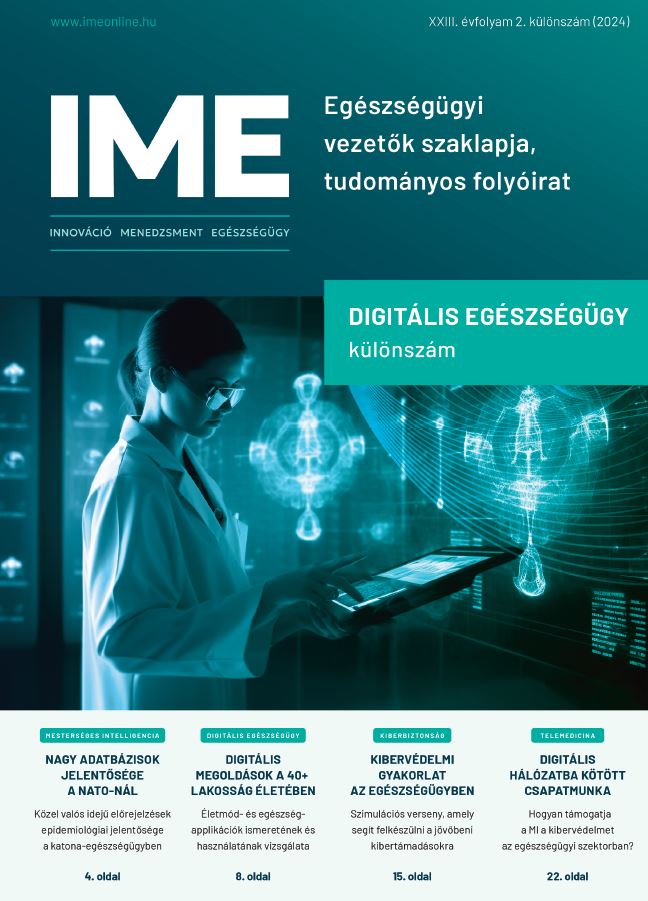Use of digital health solutions among the population over 40 years of age in Hungary – primary market research results
Abstract
The prevalence of obesity and cardiovascular diseases represents a significant public health concern in Hungary. Coronary heart disease and stroke are the leading causes of mortality in the country, underscoring the urgent need to prevent these diseases by promoting healthy lifestyle behaviours. The use of mobile health apps, defined as "software embedded in smartphones to improve health outcomes, research and services", is becoming increasingly prevalent. Research indicates that these apps can enhance health outcomes through the promotion of good nutrition, reduce the risk of obesity, thereby playing a pivotal role in the prevention of cardiovascular disease, and even facilitate nutrition-related health behaviour change more effectively than non-digital solutions. In addition to mobile health applications such as digital health interventions (DHI), artificial intelligence, virtual reality, digital therapies, wearables, remote monitoring and other software are also becoming increasingly prominent due to technological advances and the impact of the global pandemic. The objective of our research is to evaluate the attitudes, knowledge and behaviours of the Hungarian population aged 40 and over, as well as those with cardiovascular disease (CVD) within this age group, towards digital health interventions. In particular, we aim to examine awareness and utilisation of lifestyle and health mobile apps, as well as the use of ChatGPT for health purposes. Our findings will be compared between individuals with and without CVD. Additionally, the attitudes of individuals over the age of 40 towards the sharing of health data were examined. The social use of this data has the potential to enhance the healthcare system. Methodology: In May 2024, a sample of 200 Hungarian respondents aged 40 and over was interviewed via computer-assisted web-based interviews. To ensure that the sample composition was similar to that of the general population in terms of age, gender and place of residence, quota sampling was used according to the 2011 census data. Results: the results demonstrated that 52% of the sample had a diagnosis of cardiovascular disease, predominantly hypertension (83%) and cardiac arrhythmia (19%). Additionally, 46% of respondents were currently utilising a lifestyle and health mobile application. Amongst this group, 51% of those with a cardiovascular disease diagnosis and 40% of those without a diagnosis reported active current use of a lifestyle and health mobile application. With regard to the number of actively used apps, which is 0.6 in the total sample, a significant difference is observed between those with and without a diagnosis of cardiovascular disease, with a mean of 0.76 in the former group and 0.47 in the latter (p=0.041). Among lifestyle and health mobile apps in Hungary, the EESZT ("EgészségAblak") mobile app stands out, followed by fitness apps. In response to the prompt regarding the use of ChatGPT to address urgent health queries, 19% of respondents indicated a willingness to utilise this technology, although the majority expressed reluctance to remunerate ChatGPT for the provision of health-related information. In terms of privacy, 54% of respondents indicated that they would be willing to share their basic health data in a lifestyle and health mobile app. However, only 30% of the same group expressed a similar willingness to share their lab results or diagnoses. Among the Hungarian population aged 40 and above, domestic university research centres were identified as the most trusted entities for health data sharing. Conclusion: digital health interventions, including lifestyle and health mobile apps, are growing in importance, supporting health behaviour change and preventive practice. Research centres at national universities can play a key role in harnessing the benefits of data sharing and the social exploitation of the data wealth.

This work is licensed under a Creative Commons Attribution-NonCommercial-NoDerivatives 4.0 International License.




